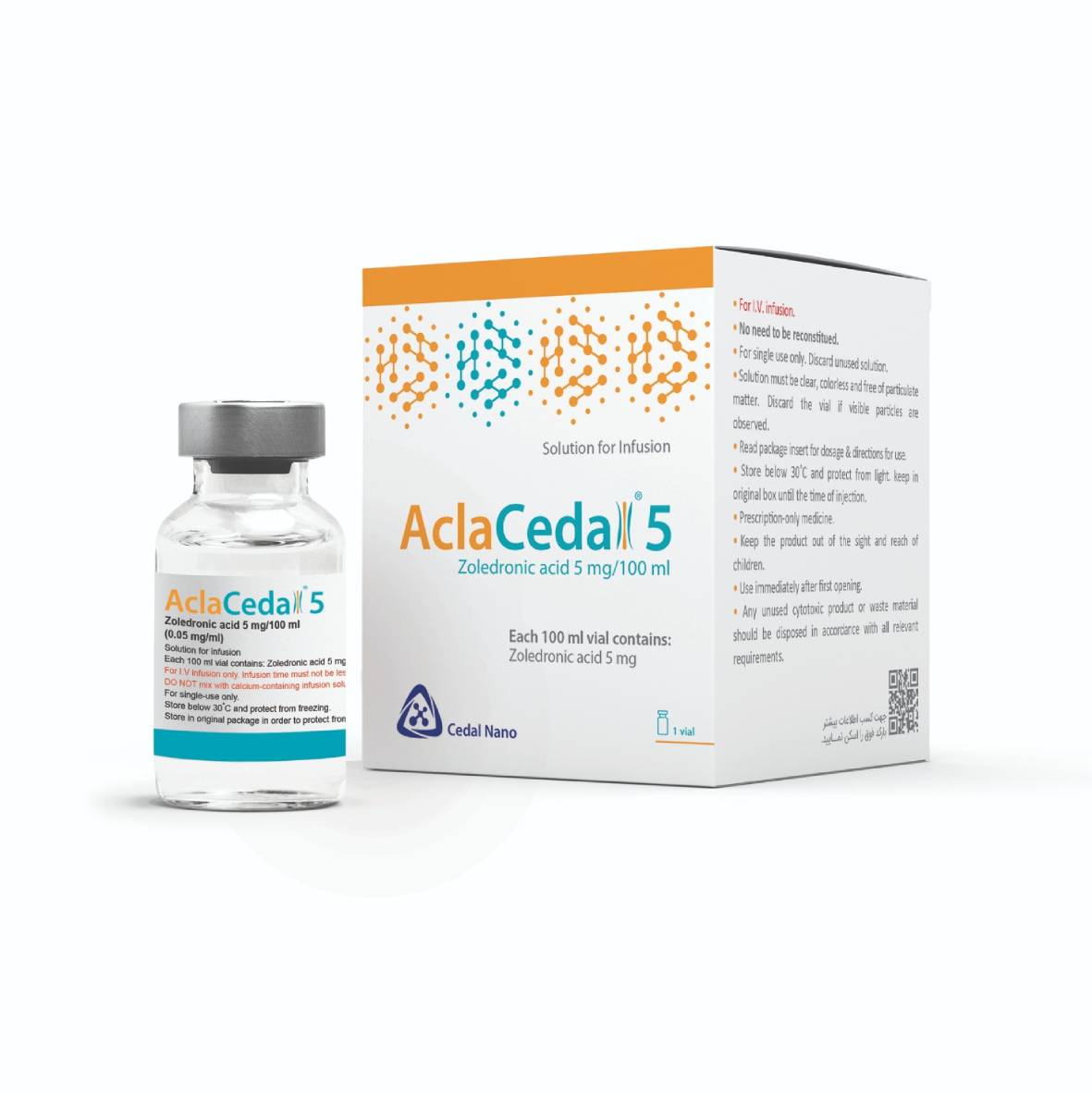The following adverse reactions, listed below, have been accumulated from clinical studies and post-marketing reports following predominantly chronic treatment with 4 mg zoledronic acid:
Very common (≥ 1/10 ) : Pyrexia
Common (≥ 1/100 to < 1/10 ) : Hypocalcaemia, Headache, dizziness, Ocular hyperaemia, Atrial fibrillation, Nausea, vomiting, diarrhoea, Myalgia, arthralgia, bone pain, back pain, pain in
Extremely , Influenza-like illness, chills, fatigue, asthenia, C-reactive protein increased. AD-verse reactions in Table 1 are listed
Uncommon (≥1/1000 to < 1/100 ) : Influenza, naspharyngitis, Anaemia, decreased appetite, Lethargy, paraesthesia, somnolence, tremor, syncope, dysgeusia, Conjunctivitis, eye pain, Vertigo, Palpitations, hypertension, flushing, Cough, dyspnoea, Dyspepsia, abdominal pain upper, abdominal pain, gastre-oesophageal reflux disease, constipation, dry mouth, oesophagitis, toothache, gastritis (Observed in patients taking concomitant glu-cocorticosteroids), Rash, hyperhydrosis, pruritus, erythema, Neck pain, musculoskeletal stiffness, joint swelling, muscle spasms, , musculoskeletal chest pain, musculoskeletal pain, joint stiffness, arthritis, muscular weakness, Blood creatinine increased, pollakiuria, proteinuria, Peripheral oedema, thirst, acute phase reaction, non-cardiac chest pain, Blood calcium decreased
Rare (≥ 1/10000 to < 1/1000 ) : Hypophosphataemia, Uveitis, episcleritis, iritis, Atypical sub-trochanteric and diaphyseal femoral fractures (bisphosphonate class adverse reaction and identified in post-marketing experience).
Very rare (<1/10,000): Osteonecrosis of the external auditory canal (bisphosphonate class adverse reaction).
Not known (cannot be estimated from the available data):Hypersensitivity reactions includ-ing rare cases of bronchospasm, urticaria and angioedema, and very rare cases of anaphy-lactic reaction/shock, Scleritis and parophthalmia, Hypotension (some of the patients had underlying risk factors), Osteonecrosis of the jaw, Renal impairment(Rare cases of renal ailure requiring dialysis and rare cases with a fatal outcome have been reported in patients with pre-existing renal dysfunction or other risk factors such as advanced age, concomitant nephrotoxic medicinal products, concomitant diuretic therapy, or dehydration in the post infusion period), Dehydration secondary to acute phase reactions (post-dose symptoms such as pyrexia, vomiting and diarrhoea).
Description of selected adverse reactions.
Atrial fibrillation
The mechanism behind the increased incidence of atrial is unknown
Class effects:
Renal impairment
Zoledronic acid has been associated with renal impairment manifested as deterioration in renal function (i.e. increased serum creatinine) and in rare cases acute renal failure. Renal impairment has been observed following the administration of zoledronic acid, especially in patients with pre-existing renal dysfunction or additional risk factors (e.g advanced age, oncology patients with chemotherapy, concomitant nephrotoxic medicinal products, con-comitant diuretic therapy, severe dehydration), with the majority of them receiving a 4 mg dose every 3–4 weeks, but it has been observed in patients after a single administration. In clinical trials in osteoporosis, the change in creatinine clearance (measured annually prior to dosing) and the incidence of renal failure and impairment was comparable for both the Zoledronic Acid and placebo treatment groups over three years. There was a transient increase in
serum creatinine observed within 10 days in 1.8% of Zoledronic Acid-treated patients ver-sus 0.8% of placebo-treated patients.
Hypocalcaemia
In clinical trials in osteoporosis, approximately 0.2% of patients had notable declines of serum calcium levels (less than 1.87 mmol/l) following Zoledronic Acid administration. No symptomatic cases of hypocalcaemia were observed.
In the Paget’s disease trials, symptomatic hypocalcaemia was observed in approximately 1% of patients, in all of whom it resolved.
Based on laboratory assessment, transient asymptomatic calcium levels below the nor-mal reference range (less than 2.10 mmol/l) occurred in 2.3% of Zoledronic Acid-treated patients in a large clinical trial compared to 21% of Zoledronic Acid-treated patients in the Paget’s disease trials. The frequency of hypocalcaemia was much lower following sub-sequent infusions.
All patients received adequate supplementation with vitamin D and calcium in the post-menopausal osteoporosis trial, the prevention of clinical fractures after hip fracture trial, and the Paget’s disease trials. In the trial for the prevention of clinical fractures fol-lowing a recent hip fracture, vitamin D levels were not routinely measured but the majority of patients received a loading dose of vitamin D prior to Zoledronic Acid administration. Local reactions
In a large clinical trial, local reactions at the infusion site, such as redness, swelling and/or pain, were reported (0.7%) following the administration of zoledronic acid.
Osteonecrosis of the jaw
Cases of osteonecrosis of the jaw have been reported, predominantly in cancer patients treated with medicinal products that inhibit bone resorption, including zoledronic acid. In a large clinical trial in 7736 patients, osteonecrosis of jaw has been reported in one patient treated with zoledronic acid and one patient treated with placebo. Cases of ONJ have been reported in the post-marketing setting for zoledronic acid.
Acute phase reactions
The overall percentage of patients who reported acute phase reactions or post-dose symp-toms (including serious cases) after Zoledronic acid administration is as follows (frequen-cies derived from the study in treatment of post-menopausal osteoporosis): fever (18.1%), myalgia (9.4%) , flu-like symptoms (7.8%) , arthralgia (6.8%) and headache (6.5%), the majority of these symptoms were mild to moderate in nature and resolved within 3 days of the event onset. The incidence of these symptoms decreased with subsequent annual doses of Zoledronic acid. The percentage of patients who experienced adverse reactions was lower in a smaller study (19.5%, 10.4%, 10.7% after the first, second and third infusion, respectively), where prophylaxis against adverse reactions was used.
Reporting of suspected adverse reactions
Reporting suspected adverse reactions after authorisation of the medicinal product is im- portant. It allows continued monitoring of the benefit/risk balance of the medicinal product. Please report
any adverse drug reactions via contacting Cedal Nano.(1)


